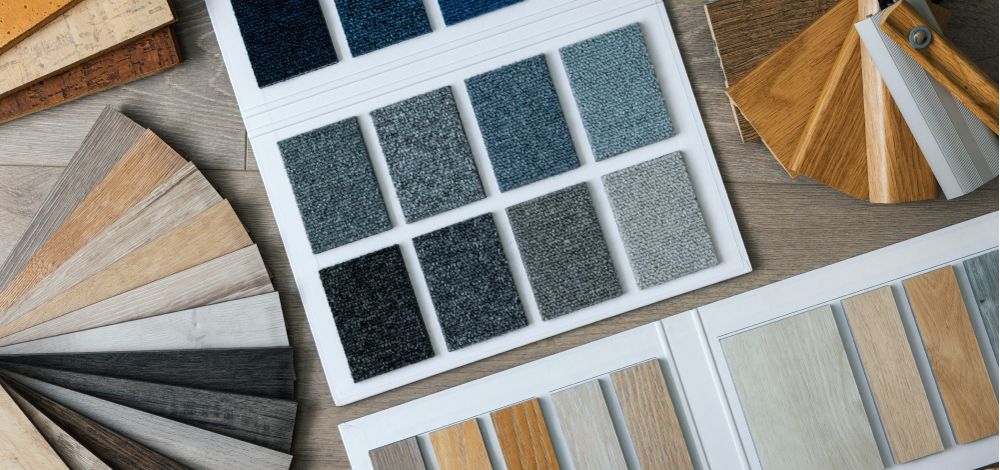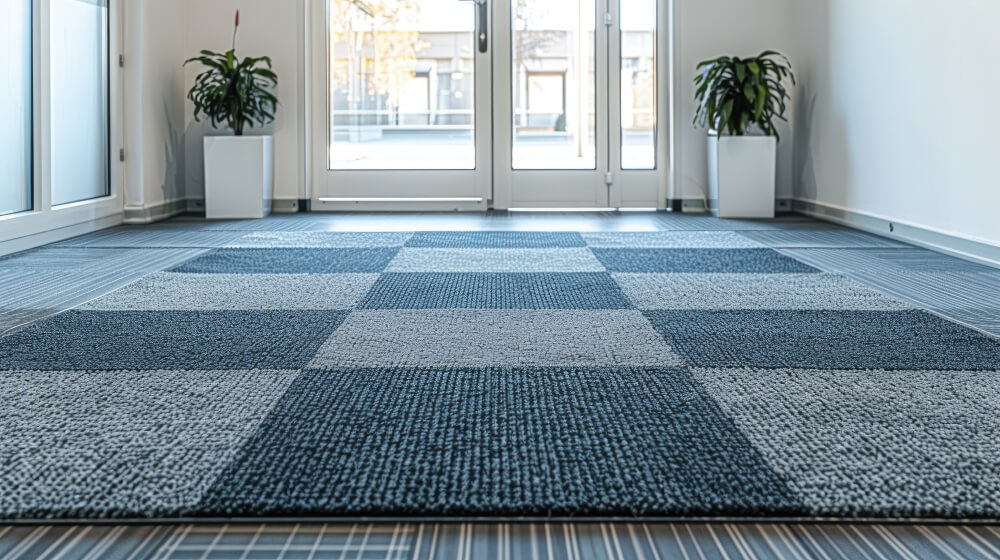1. Understanding Ceramic and Porcelain Tiles
Ceramic Tiles: Ceramic tiles are made from natural clay that is mixed with water, shaped into tiles, and then fired in a kiln at high temperatures. They are typically glazed to provide a hard, protective layer that adds color and pattern to the tile.
Porcelain Tiles: Porcelain tiles are a type of ceramic tile, but they are made from a more refined clay and fired at higher temperatures. This process makes porcelain tiles denser, less porous, and more durable than regular ceramic tiles. Porcelain tiles can be glazed or unglazed, and they often have a more uniform color throughout the tile.
2. Key Differences Between Ceramic and Porcelain Tiles
- Composition and Manufacturing:
- Ceramic Tiles: Made from a mixture of natural clay and water, fired at lower temperatures (typically around 1,800-2,000°F). They are less dense and more porous than porcelain tiles.
- Porcelain Tiles: Made from a finer, more refined clay, and fired at higher temperatures (typically around 2,200-2,500°F). They are denser, less porous, and more durable than ceramic tiles.
- Water Absorption:
- Ceramic Tiles: Have a higher water absorption rate (typically 3-7%), making them more susceptible to moisture and staining.
- Porcelain Tiles: Have a lower water absorption rate (less than 0.5%), making them highly resistant to moisture and suitable for wet areas like bathrooms and kitchens.
- Durability:
- Ceramic Tiles: While durable, they are generally less dense and more prone to chipping and cracking compared to porcelain tiles.
- Porcelain Tiles: Extremely durable and resistant to chipping, scratching, and wear, making them ideal for high-traffic areas and commercial applications.
- Appearance:
- Ceramic Tiles: Available in a wide range of colors, patterns, and finishes. The glaze can add a glossy or matte finish and protect the surface.
- Porcelain Tiles: Also available in various colors, patterns, and finishes, including natural stone and wood-look designs. They often have a more uniform color and pattern throughout the tile, especially if unglazed.
- Cost:
- Ceramic Tiles: Generally less expensive than porcelain tiles due to the lower cost of raw materials and the firing process.
- Porcelain Tiles: More expensive due to the higher cost of refined clay and the additional processing required.
Join HICP Homeowner’s Alliance
Connect with experts, get special discounts and enjoy member benefits
3. Benefits of Ceramic and Porcelain Tiles
- Ceramic Tiles:
- Affordability:
- Cost-Effective: Ceramic tiles are generally more affordable than porcelain tiles, making them a budget-friendly option for homeowners.
- Variety: Available in a wide range of colors, patterns, and finishes, allowing for versatile design options.
- Ease of Installation:
- Lightweight: Ceramic tiles are lighter than porcelain tiles, making them easier to handle and install.
- DIY-Friendly: Suitable for DIY projects due to their ease of cutting and installation.
- Versatility:
- Wide Range of Applications: Can be used for floors, walls, backsplashes, and countertops in various rooms, including kitchens, bathrooms, and living areas.
- Porcelain Tiles:
- Durability:
- High Density: Porcelain tiles are denser and more durable than ceramic tiles, making them resistant to chipping, scratching, and wear.
- Long-Lasting: Ideal for high-traffic areas and commercial applications due to their longevity.
- Water and Stain Resistance:
- Low Water Absorption: Porcelain tiles are highly resistant to moisture, making them suitable for wet areas like bathrooms, kitchens, and outdoor spaces.
- Stain Resistance: Less porous than ceramic tiles, making them more resistant to staining.
- Aesthetic Appeal:
- Realistic Designs: Porcelain tiles can mimic the look of natural stone, wood, and other materials with impressive realism.
- Uniformity: Glazed and unglazed options provide consistent color and pattern throughout the tile, even if chipped or worn.
4. Drawbacks of Ceramic and Porcelain Tiles
- Ceramic Tiles:
- Durability:
- Less Durable: More prone to chipping and cracking compared to porcelain tiles, especially in high-traffic areas.
- Wear and Tear: Glazed ceramic tiles can show signs of wear over time, especially in areas with heavy use.
- Water Absorption:
- Higher Absorption Rate: More susceptible to moisture and staining, making them less suitable for wet areas and outdoor use.
- Maintenance:
- Grout Maintenance: The grout lines between ceramic tiles can become stained and require regular cleaning and sealing.
- Porcelain Tiles:
- Cost:
- Higher Cost: Porcelain tiles are generally more expensive than ceramic tiles due to the higher cost of materials and manufacturing.
- Installation Costs: Professional installation is often recommended, adding to the overall cost.
- Installation Challenges:
- Heavy Weight: Porcelain tiles are heavier and harder to cut than ceramic tiles, making installation more challenging.
- Specialized Tools: Requires specialized tools for cutting and installation, which can increase costs and complexity.
- Slipperiness:
- Smooth Surface: Some porcelain tiles, especially those with a polished finish, can be slippery when wet, posing a safety hazard in certain areas.
5. Applications and Best Uses
- Ceramic Tiles:
- Indoor Flooring:
- Living Areas: Suitable for living rooms, dining rooms, and bedrooms where foot traffic is moderate.
- Kitchens and Bathrooms: Can be used in kitchens and bathrooms, but require proper sealing and maintenance to prevent moisture damage.
- Walls and Backsplashes:
- Versatile Design: Ideal for walls, backsplashes, and decorative accents due to the wide range of colors and patterns available.
- Lightweight: Easier to install on vertical surfaces compared to heavier tiles.
- Countertops:
- Cost-Effective Option: Can be used for countertops, offering a budget-friendly alternative to more expensive materials like granite or quartz.
- Porcelain Tiles:
- High-Traffic Areas:
- Durability: Ideal for high-traffic areas such as entryways, hallways, and commercial spaces due to their durability and resistance to wear.
- Commercial Use: Suitable for commercial applications, including retail stores, restaurants, and office buildings.
- Wet Areas:
- Bathrooms and Kitchens: Perfect for bathrooms, kitchens, laundry rooms, and other wet areas due to their low water absorption and stain resistance.
- Outdoor Spaces: Can be used for outdoor patios, walkways, and pool decks due to their resistance to moisture and weather conditions.
- Specialty Applications:
- Radiant Heating: Porcelain tiles are compatible with radiant heating systems, providing a durable and efficient option for heated floors.
- Fireplaces: Suitable for fireplace surrounds due to their heat resistance and aesthetic appeal.
6. Choosing the Right Tile for Your Home
When deciding between ceramic and porcelain tiles, consider the following factors to determine which option is best suited for your needs:
- Location:
- Indoor vs. Outdoor: Porcelain tiles are more suitable for outdoor use and high-moisture areas due to their low water absorption and durability. Ceramic tiles are better suited for indoor applications where moisture exposure is minimal.
- High-Traffic Areas: For high-traffic areas, such as entryways and hallways, porcelain tiles are a more durable option. Ceramic tiles are suitable for areas with moderate foot traffic.
- Budget:
- Material Costs: If budget is a primary concern, ceramic tiles are generally more affordable than porcelain tiles. However, consider the long-term value and durability of porcelain tiles for high-traffic or moisture-prone areas.
- Installation Costs: Factor in the cost of professional installation, especially for porcelain tiles, which may require specialized tools and expertise.
- Aesthetic Preferences:
- Design and Style: Both ceramic and porcelain tiles offer a wide range of colors, patterns, and finishes. Consider your design preferences and the overall aesthetic you want to achieve in your space.
- Consistency: If you prefer a uniform look, especially if tiles may get chipped or worn, porcelain tiles with consistent color and pattern throughout the tile are a better choice.
- Maintenance:
- Ease of Cleaning: Both types of tiles are relatively easy to clean, but porcelain tiles may require less maintenance due to their low porosity and stain resistance.
- Grout Maintenance: Consider the maintenance required for grout lines, which can stain over time and require regular cleaning and sealing.
Conclusion
Both ceramic and porcelain tiles offer excellent flooring solutions, each with its unique benefits and drawbacks. Understanding the differences between these two types of tiles can help you make an informed decision that best suits your needs, budget, and aesthetic preferences.
- Ceramic Tiles: A cost-effective, versatile option suitable for various indoor applications. They offer a wide range of design options but are less durable and more prone to moisture damage compared to porcelain tiles.
- Porcelain Tiles: A more durable, moisture-resistant option ideal for high-traffic areas, wet spaces, and outdoor use. While they may be more expensive and challenging to install, their long-term benefits often justify the investment.
By considering factors such as location, budget, aesthetic preferences, and maintenance needs, you can choose the right tile flooring for your home that combines functionality, durability, and style.








